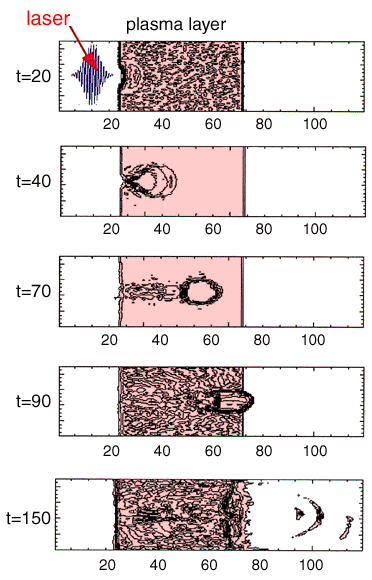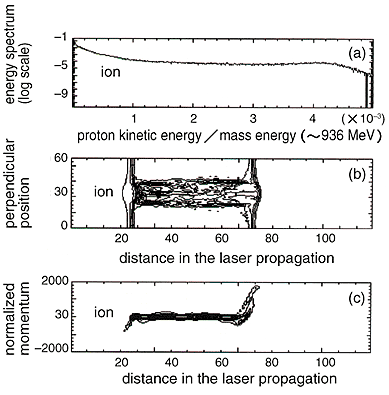We have developed an intense (100 TW) short-pulsed laser system and studied phenomena in the extremely high-energy density brought about by the focusing of such a laser beam. Atoms in the beam will be ionized to form a plasma which is oscillating collectively. Here, the ponderomotive force from the electromagnetic waves acting on charged particles in a varying electric field is of major concern. In such experiments, acceleration of energetic electrons and ions, and the production of neutrons and gamma-rays resulting from nuclear reactions have been reported.
As to the ponderomotive force effect in a low density plasma, acceleration in the perpendicular direction to the laser propagation has been investigated. We have clarified for the first time by a simulation method an ion acceleration mechanism in the direction of the laser propagation in intense laser-plasma interactions. Figure 4-6 shows how the electron density contour in the laser irradiated plasma layer changes with time, and finally results in electron emissions. Figure 4-7 shows the behavior of ions at time t = 150 after electron emissions from the plasma layer are completed. It is seen that at both the entrance and exit of the plasma layer, fast ion emission occurs. If thicker plasma layers are used, ion explosion occurs at a somewhat later time, with more electrons swept out of the layer and thereby the increased ion explosion force results in a higher accelerated energy.
In the above scheme above, we expect to study methods for extraction of directional fast ions as an ion beam from laser-plasma interactions and their future applications to high energy nuclear science. |

